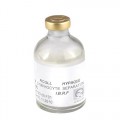A Comparison of Blood Factor XII
A Comparison of Blood Factor XII Auto activation in Buffer, Protein Cocktail, Serum, and Plasma Solutions
Avantika Golas,1 Chyi-Huey Josh Yeh,1Harit Pitakjakpipop,1 Christopher A. Siedlecki,2,3 and Erwin A. Vogler
A Contribution from the Hematology at Biomaterial Interfaces Research Group
Abstract
Activation of blood plasma coagulation in vitro by contact with material surfaces is demonstrably dependent on plasma-volume-to-activator-surface-area ratio. The only plausible explanation consistent with current understanding of coagulation-cascade biochemistry is that procoagulant stimulus arising from the activation complex of the intrinsic pathway is dependent on activator surface area. And yet, it is herein shown that activation of the blood zymogen factor XII (Hageman factor, FXII) dissolved in buffer, protein cocktail, heat-denatured serum, and FXI deficient plasma does not exhibit activator surface-area dependence. Instead, a highly-variable burst of procoagulant-enzyme yield is measured that exhibits no measurable kinetics, sensitivity to mixing, or solution-temperature dependence. Thus, FXII activation in both buffer and protein-containing solutions does not exhibit characteristics of a biochemical reaction but rather appears to be a “mechanochemical” reaction induced by FXII molecule interactions with hydrophilic activator particles that do not formally adsorb blood proteins from solution. Results of this study strongly suggest that activator surface-area dependence observed in contact activation of plasma coagulation does not solely arise at the FXII activation step of the intrinsic pathway.






Leave a Reply
Want to join the discussion?Feel free to contribute!